About half of the carmakers stipulate that the mandatory vehicle inspection should include a timing belt check. Interested in an overview of the different kinds of wear you can encounter and, perhaps even more importantly, how you can detect them in an easy way? Read on to find out!
Importance of timing belt checks
You obviously want your customers to hit the road safely, but checking the timing belt when the carmaker prescribes it is also important to avoid the rejection of warranty claims. Having established the importance of a timing belt check, let’s move on to some tips on how to efficiently perform an inspection on the belt drive.
Performing a timing belt inspection
You have to check the timing belt for the following symptoms of wear:
• any abrasion on the back of the belt
• transverse cracks in the back of the belt
• damage / increased wear at the belt edge
• loss of belt width
• cracking at the root of the tooth
• tooth flank damage
If you spot one of these signs, you should replace the toothed belt:
The prerequisite to detecting any of these symptoms is removing the upper timing belt cover.
1. Abrasion on the back of the belt
Abrasion
Abrasion on the back of the belt can come in many different guises, so the wear you encounter may look different from the symptoms depicted above, but whenever you see signs of abrasion, you should change the timing belt immediately. The underlying causes may vary from misalignment to low belt tension or, conversely, high belt tension.
2. Transverse cracks in the back of the belt
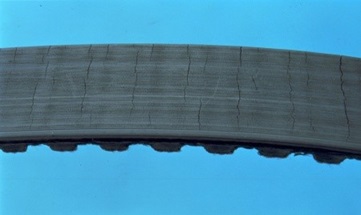
Transverse cracks
3. Damage or increased wear at the belt edge
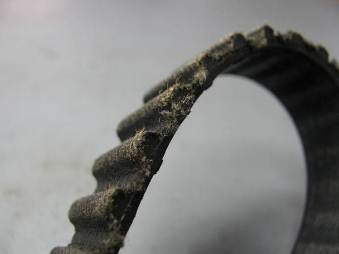
Damaged belt edge
4. Loss of belt width
Every belt has its own width, which is printed on the back (but which you can also check on the packaging or in the catalogue if the ink on the belt has faded). Measure the belt. If its width is two to three millimeters less than it should be, you should replace the timing belt.
5. Cracking at the root of the tooth
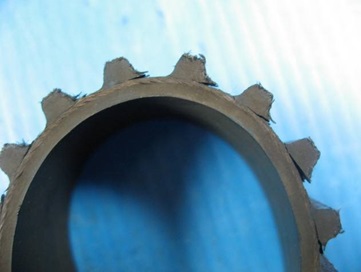
Cracks at the root of the teeth
6. Tooth flank damage
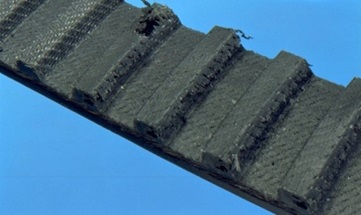
Damaged tooth flanks
To check points 5 and 6, use a clearly visible spot where the toothed belt is bent over a tension- or deflection pulley on the back side.
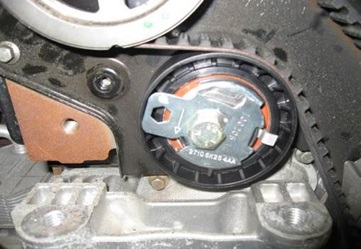
Inspecting the belt teeth 1
If the tension or deflection pulley has a flanged pulley, you can carry out the inspection in the area of the camshaft sprocket. This area should be well lit.
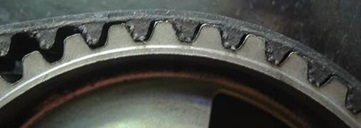
Inspecting the belt teeth 2
If a flanged pulley obstructs the view of the timing belt edge, the inspection can be carried out by slightly (and carefully!) twisting the timing belt.
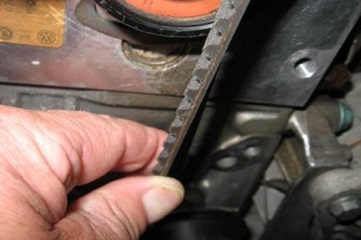
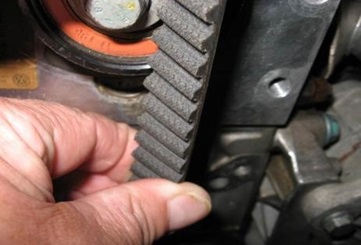
Carefully twisting the timing belt
Not all damage is visible!
If you don’t know when the timing belt was installed or if the mileage of the belt is unknown, it is always best to replace it. A toothed belt that has run under optimum conditions is hardly subject to increased wear. Nevertheless, it may be at the end of its service life and/or be damaged in ways that cannot be seen from the outside. An important factor determining a belt’s service life is bending fatigue of the glass-fiber tensile members – or, in other words, the number of times a toothed belt has run over the drive components. This fatigue leads to damage that is not visible from the outside, but that can cause the tensile members to break. So, better be safe than sorry!
Wear patterns: an overview